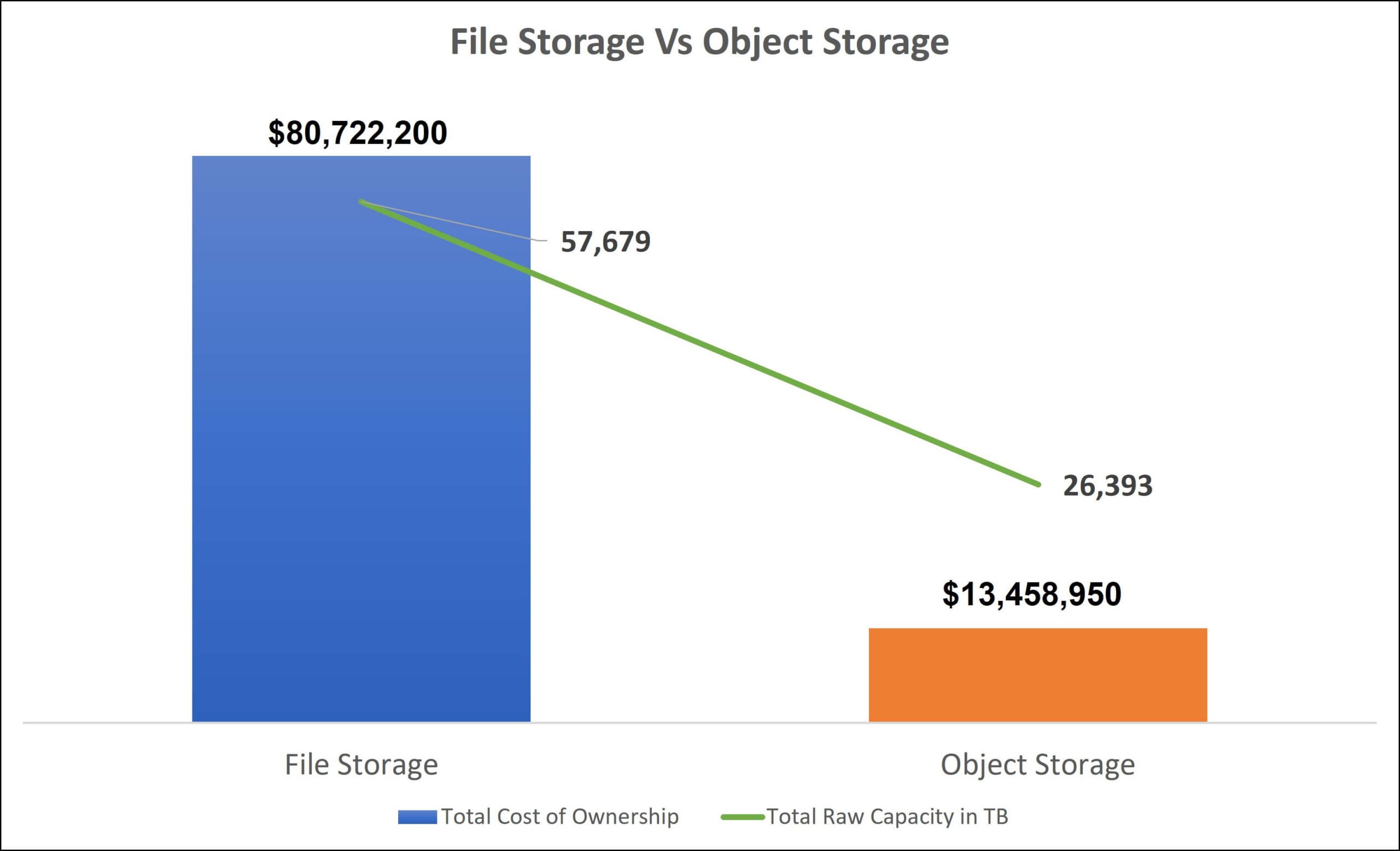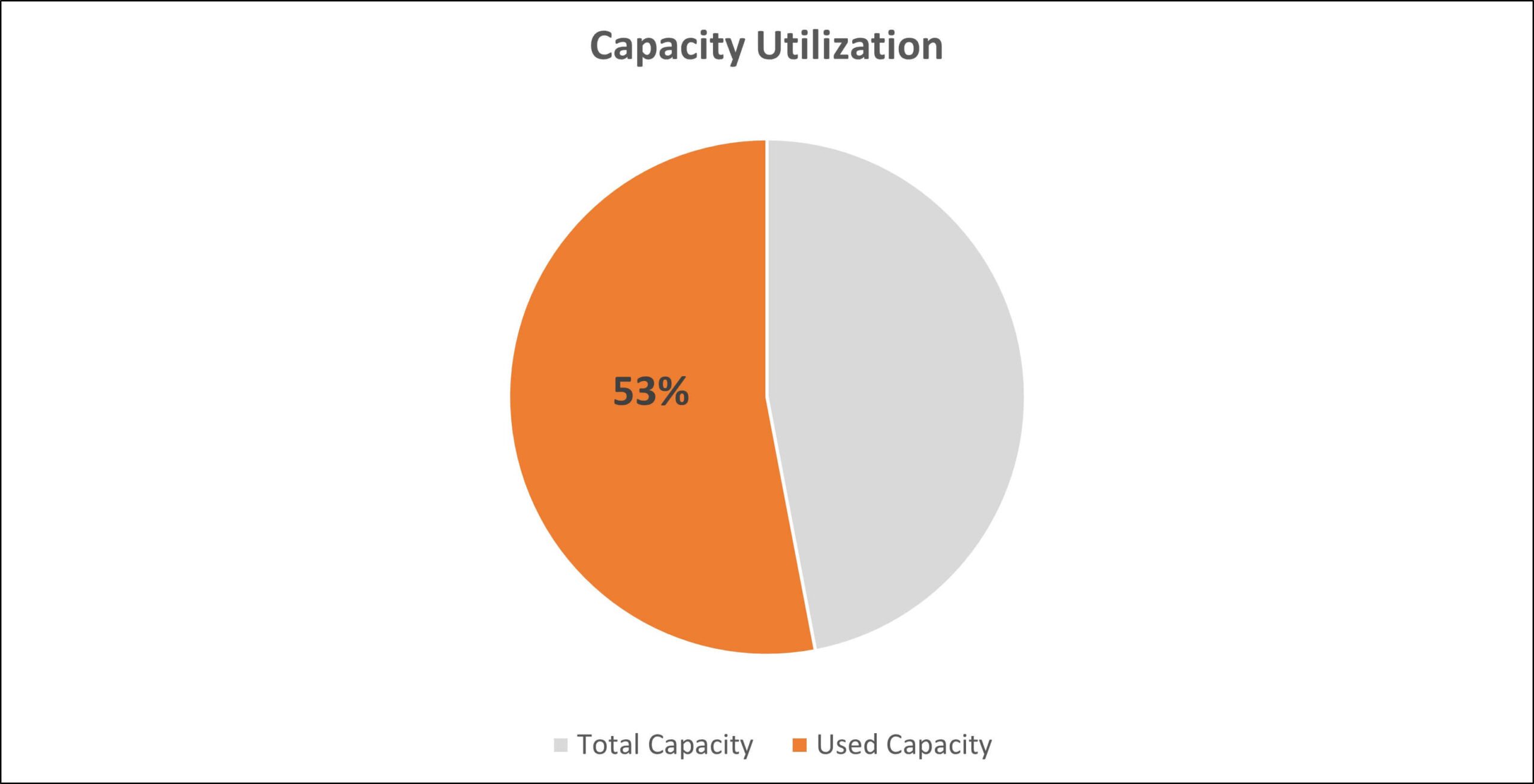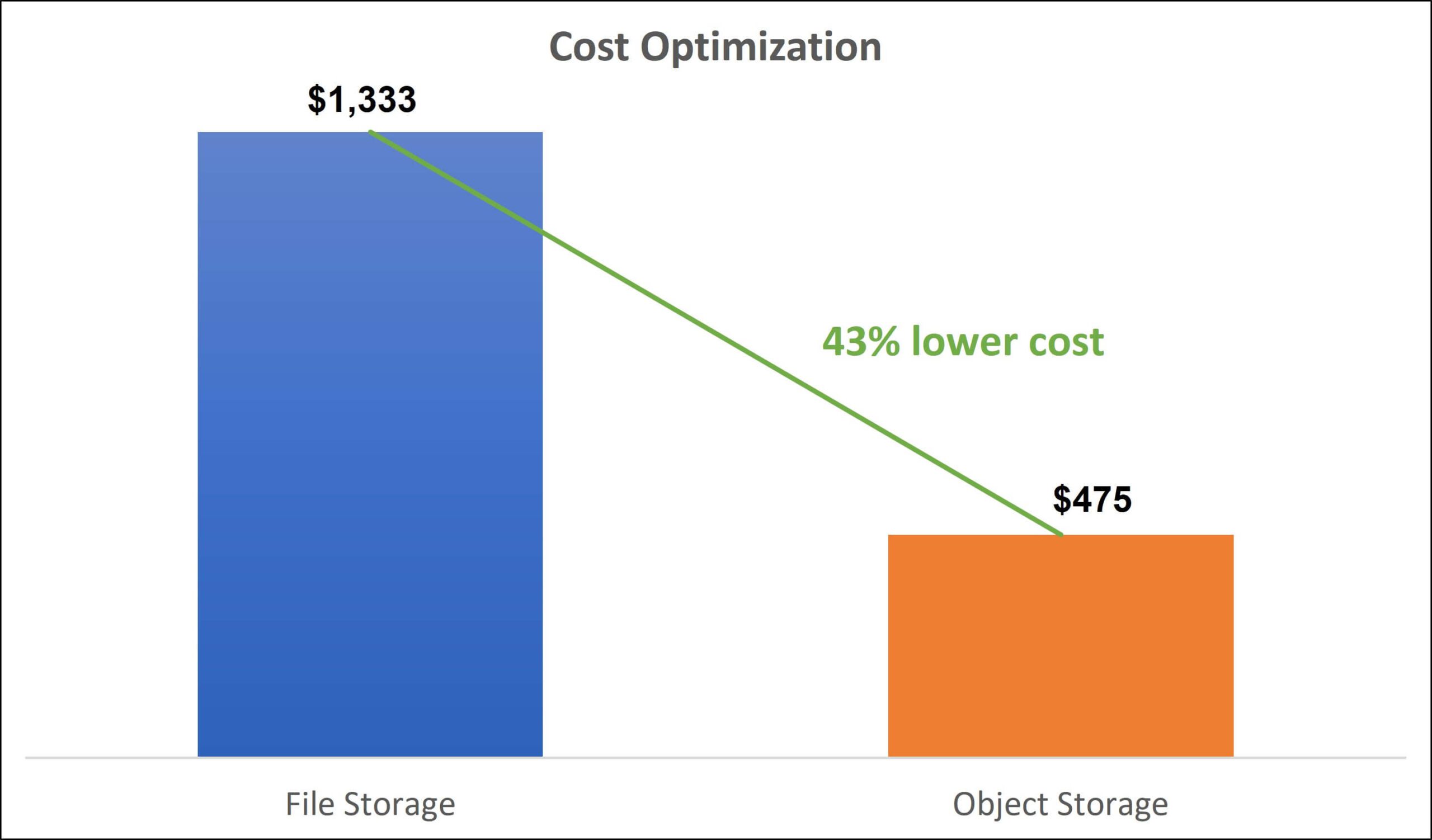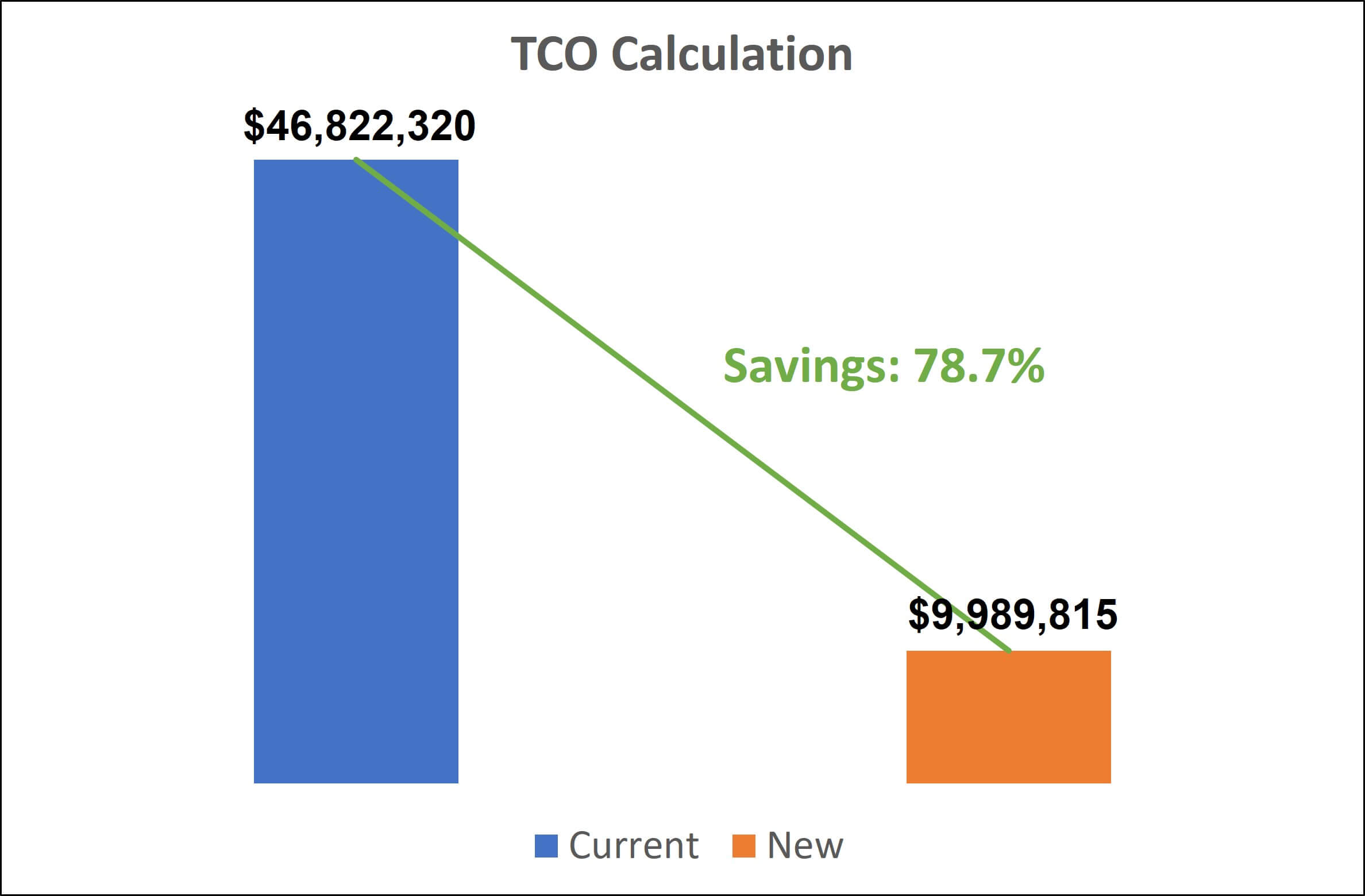78.7% Lower TCO Achieved Through Smart Data Lifecycle Management for a Fortune 400 Bank.




Business Need
Streamlining Data Storage Infrastructure for Cost-Efficiency
- Optimize Existing Storage: Utilizing file and object storage applications to their fullest potential.
- Cost Reduction: Moving data from file storage to object storage to benefit from pay-as-you-go pricing and reduce overall costs.
- Intelligent Data-Driven Migrations: Ensuring seamless and intelligent migrations from file to object storage.


Challenges Faced


TCO Disparity
High TCO of $80.72M for 57,679 TB of data on file storage and $13.46M for 26,393 TB of data on object storage.


Underutilization of File Storage


Cost Imbalance


Solution Offered


Data Identification
- Analyzing metadata to discover, classify, tag, and index data sets based on ownership, access, metadata, and content
- Content analytics for a single pane view of sensitive data, followed by quarantining high-risk sensitive data in secure storage with limited access
- Identifying files to move to low-cost object storage for long-term archival or cloud tiering
- Ensuring role-based access with intelligent file access control and file-repermissioning


Unified Data Management
Ensuring seamless migration with maximum user access and minimal disruptions, while automating access control and file security management.


Migration of Data
- Automated data migrations from file-to-object with object sizing feature
- Policy-based tiering (local and cloud)
- Intelligent data placement to ensure data is placed closest to the applications, meeting data governance and compliance requirements
- Unified data management during migration to maximize user access, minimize cutover windows, user downtime, and other disruptions.
- Automated access control and file security management
Business Impact
Significant Cost Savings: A remarkable cost saving of 79.2% was achieved in one year, thanks to intelligent data management.
Increased Usable Data Capacity: By moving data to object storage, the company could save $858 per TB and increase total usable data capacity by 29%.
Proactive Data Analysis: Ongoing proactive analysis of data ensured continuous optimization and efficient data placement.
Carbon Reduction and ESG Value Addition: The company’s massive carbon reduction impact resulted in valuable Environmental, Social, and Governance (ESG) value addition.
Reduced Data Center Footprint: Avoiding new hardware purchases led to a significant reduction in the data center footprint.


